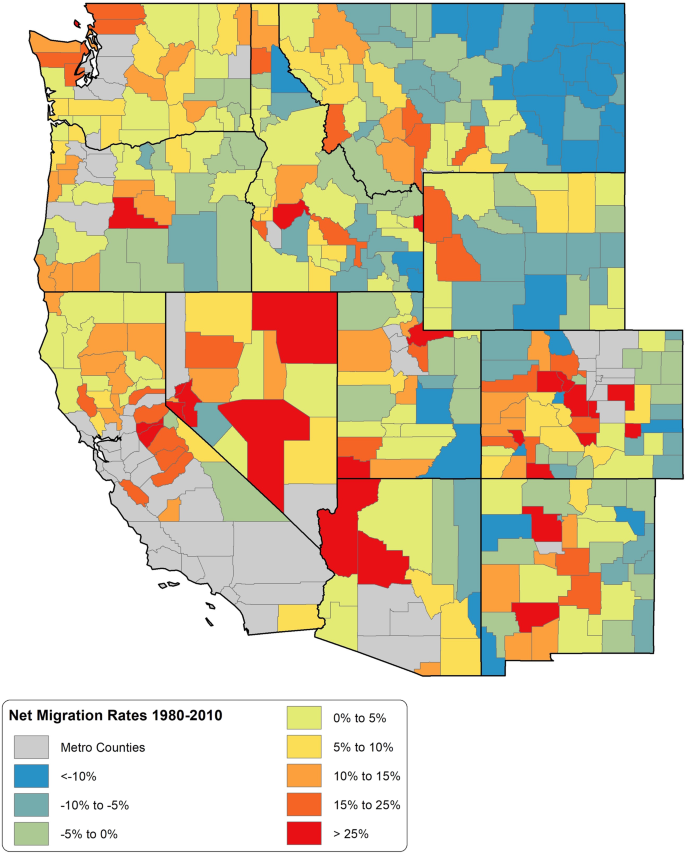
EXCEPTIONAL POPULATION DECLINE IN EASTERN MONTANA
County-by-county population data were illustrated in a recent publication (Hjerpe et al. 2020. Amenity migration and public lands: Rise of the protected areas. Environ. Management 66:56-71). Note the spectacularly large area of contiguous counties in east and north-central Montana that has lost population during 1980-2010. Across 11 western states, only an area of population decline including arid central Wyoming is even half as large.
This population decline has continued since the 1930s. Today’s sparse populations and limited tax bases limit provision of public services including schools, health care and infrastructure, including roads and communication systems. Poverty
rates are relatively high. Existing services depend upon public subsidies. Occasional economic expansions with petroleum developments never lasted. Mostly ranching, and some farming, sustain these economies. Still, the rural lifestyles are preferred by many who live in the area.
A more diversified economy will be necessary to improve prosperity and self-sufficiency. Restoration of public-trust, wild bison on the Charles M. Russell National Wildlife Refuge would contribute diversity to some county economies by expanding tourism and providing necessarily long hunting seasons with hunter expenses, including guiding, outfitting and carcass retrieval. And bison restoration on the Refuge need not threaten any rural lifestyles.
Thank you,
Jim Bailey, Montana Wild Bison Restoration Coalition
